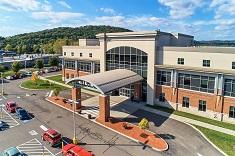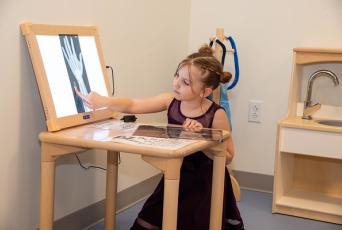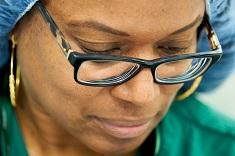
Breast Cancer Treatment
UHS provides those diagnosed with breast cancer access to comprehensive care, state-of-the-art technology and a multispecialty team to coordinate the best breast cancer treatment options for you in New York's Southern Tier. Some brief information is provided below about several treatment options available at UHS. This information may be helpful when you speak with your healthcare provider.
The treatment options available to you will depend on a number of factors including:
- The type of tumor
- The extent of the disease at the time of diagnosis
- Your age
- Your medical history
Your personal feelings about treatment, your self-image, your family history and your lifestyle will also be important considerations in your healthcare provider’s assessment and recommendations. You and your physician should discuss these treatment methods and how they apply to your situation. Understanding all your options from the beginning of your diagnosis allows you to have all of the information you need to make an informed and rational decision about your New York breast cancer treatment from UHS.
Lumpectomy
During a lumpectomy, both the tumor and a wedge of normal tissue surrounding the cancer are removed. A margin of normal tissue must be cut out to ensure the tumor has been completely removed. Lumpectomy is followed by approximately 6 weeks of radiation therapy administered at our breast cancer treatment center in New York's Southern Tier.
Mastectomy
Mastectomy is the surgical removal of the breast; it refers to a number of different procedures, including modified radical mastectomy, total (or simple) mastectomy, nipple-sparing mastectomy and radical mastectomy. Based on the size and location of the mass in your breast, your surgeon will recommend the type of surgery that offers you the best chance of successful treatment.
Sentinel Lymph Node Biopsy
Sentinel node biopsy is a surgical procedure used to determine if cancer has spread beyond a primary tumor into your lymphatic system. Sentinel node biopsy involves injecting a tracer material that helps locate the sentinel nodes during surgery. The sentinel nodes are removed and analyzed by a pathologist.
Axillary Node Dissection
Axillary node dissection involves removing at least 6 of the lymph nodes under the arm. These nodes are then sent to a pathologist to be checked for cancer.
Radiation Therapy
Radiationtherapy (also called radiotherapy) uses high-energy rays to kill cancer cells. It affects cells only in the part of the body that is treated. Radiation therapy may be used as a part of our breast cancer treatment in New York after surgery to destroy breast cancer cells that remain in the area.
Chemotherapy
Chemotherapy uses drugs to kill cancer cells. The drugs that treat breast cancer are usually given through a vein (intravenous) or as a pill. Most women receive a combination of drugs. The side effects of chemotherapy depend mainly on which drugs are given and how much. Chemotherapy kills fast-growing cancer cells, but the drugs can also harm normal cells that divide rapidly.
Hormone Therapy
Hormone therapy is also called anti-hormone treatment. If lab tests show that the tumor in your breast has hormone receptors, then hormone therapy may be an option. Hormone therapy keeps cancer cells from getting or using the natural hormones (estrogen and progesterone) they need to grow.
-
 UHS Child Care offering “School’s Out” program during winter breakOctober 15, 2025
UHS Child Care offering “School’s Out” program during winter breakOctober 15, 2025The UHS Child Care center is excited to announce a new option for the upcoming winter break. The center is now enrolling school-age children for December 22 - January 2, with the exception of Christmas Day and New Year's Day.
-
 Hannah Hatfield is our latest Sunshine Award winner!October 14, 2025
Hannah Hatfield is our latest Sunshine Award winner!October 14, 2025A program to recognize the extraordinary care and contributions of our non-licensed nursing support staff continues at UHS with Hannah Hatfield, Main Tower 6, UHS Wilson Medical Center, who was named the August winner of the Sunshine Award!
-
 Large turnout as Team UHS shows support at annual "Making Strides" walkOctober 13, 2025
Large turnout as Team UHS shows support at annual "Making Strides" walkOctober 13, 2025Many UHS staff members turned out October 12 for the 2025 edition of the “Making Strides Against Breast Cancer” walk at Mirabito Stadium in Binghamton.
-
 Consider early detection this Breast Cancer Awareness MonthOctober 13, 2025
Consider early detection this Breast Cancer Awareness MonthOctober 13, 2025October is Breast Cancer Awareness Month, an annual campaign to educate the community on the prevalence of breast cancer, the importance of scheduling mammograms, and the lasting impact of a breast cancer diagnosis. For one breast cancer patient, a routine mammogram made all the difference.


